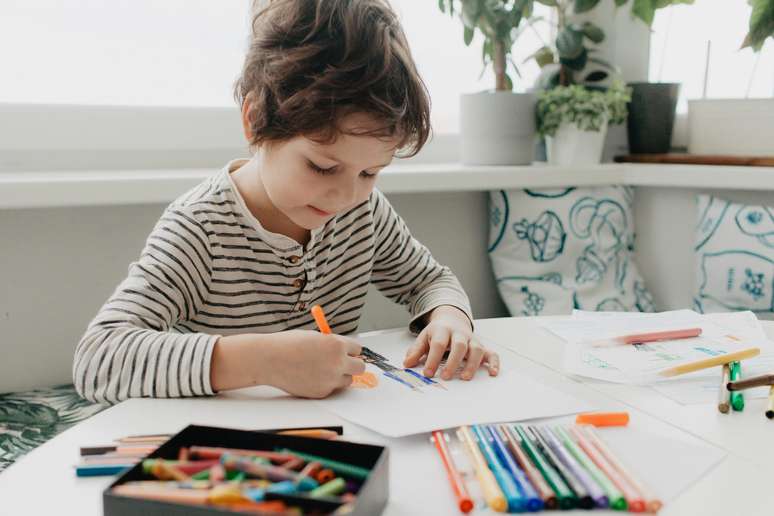According to the psychoanalyst, parents should offer painting material to the little ones and talk about their productions.
The scribbles of the little ones reveal feelings and sometimes they can indicate the need for therapy
Projects for children, often seen as simple games or school tasks, are actually a powerful emotional language. Every stroke, every color, each figure represented brings a piece of the internal world of the child. Spontaneously, the design acts as a mirror of the children’s psyche, revealing fears, tensions, desires and joys.
“The child does not draw by chance. When he puts something on the card, he is projecting his inner universe. He is an expression of the unconscious, as with dreams in adults,” explains the psychoanalyst and a family cane expert, Renata Bento.
According to the expert, the correct interpretation of the drawings can be a precious tool in the psychological diagnosis of children, but it takes caution. “Not all dark designs represent sadness or trauma. It is essential to consider the child’s age, its cognitive development, its history and the context in which that drawing was produced,” he says.
Therapeutic design
The act of drawing involves more than motor skill: it activates deep mental and emotional processes. When designing, the child organizes thoughts, elaborates conflicts and treats feelings that cannot always verify.
“The drawing can be therapeutic. The child elaborates anxieties, resolves tensions and communicates through him. It is as if he said:” This is the way I feel “, even if he has no words for this. However, it is important not to interpret the design of the child at random. The interpretation of the drawing should be within a clinical context with the child and the specialist”, reinforces.
Still according to the psychoanalyst, parents should observe carefully – but without judgments – the contents that appear in the drawings. Ask with kindness what is represented can take the way to precious dialogues. “It is important not to design your anxieties on the child’s design. He uses this expression as an opportunity for listening and connection,” he says.
Warning signals
Although it is natural for designs to vary according to personality, sex, age and emotional moment, some standards may indicate that something is not going well. “Repetitive drawings with violent content, the absence of important figures such as the child or parents, the excessive use of dark colors by older children, faceless figures or often tear their projects can be signs of psychic suffering”, warns Renata Bento.
According to her, in such cases, it is essential to maintain an open dialogue channel with the child and, if the behavior persists, look for a professional guide. “It is not a question of creating alarm, but understanding that drawing is a form of communication. If it expresses pain or confusion in a recurring way, we must listen to this request for help,” he says.
How to encourage
At home, parents can and should encourage the artistic expression of their children. Providing drawing materials and setting time to talk about productions can strengthen ties and allow the child to feel welcomed in his feelings.
“You should not force the child to draw, but to create an environment in which this is possible. Sometimes a simple ‘says of this design’ can open an entire universe of fantasy, emotion and connection”, concludes the psychoanalyst.
Edition: Fernanda Villas Bôas
Source: Terra
Ben Stock is a lifestyle journalist and author at Gossipify. He writes about topics such as health, wellness, travel, food and home decor. He provides practical advice and inspiration to improve well-being, keeps readers up to date with latest lifestyle news and trends, known for his engaging writing style, in-depth analysis and unique perspectives.









